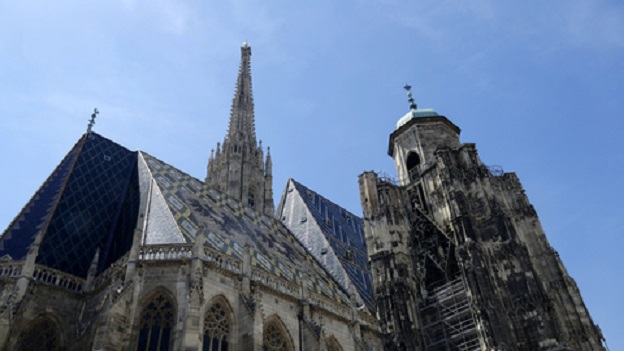

By Sigrid Weidenweber
Further travel along the Danube leads to Budapest and Vienna, the two pearls of the Austro-Hungarian Empire. This empire consisted of a union constituted in 1867, by which each country retained its sovereignty for all matters of public governing but had conjoint oversight for matters in foreign and military affairs. This grand empire encompassed Austria and the Tyrol. From Trieste its border went along the Adriatic Sea to Monte Negro. It enclosed, besides Hungary, Herzegovina, today’s Bulgaria and Romania, Transylvania, the Carpathian Mountains, Galicia, parts of Poland and all of Bohemia. As a landmass it was only rivaled by Russia on the continent. It produced an industrial output large enough to place fourth after the United States, Germany and the United Kingdom.
Knowing these facts, the cultural and religious affinity between Austria and Hungary is easily understood. Its influence extended as far as Romania’s Bucharest.
All three cities impress the visitor with urban charm. Budapest was not so long ago a tale of two different cities. Erected in 1849, the famous Chain Bridge was the first permanent connection between the cities of Buda and Pest. Buda, the older part, holds the medieval Castle District and the Palace, while Pest holds the Parliament building, and the commercial, financial and business district with its modern shops, bars and restaurants.
Many buildings show an architectural note with Asiatic influence, as do the steeply pitched towers in the castle district that hint at the antecedents of the Magyars. Of special note is the overwhelmingly ornate St. Stephen’s Basilica, enshrining the country’s most holy relics. Stephen, son of Geza, was crowned the first king of Hungary in the year 1000. Inside the Parliament a huge crown is located, the crown of his coronation. The “Holy Crown,” is a band of gold imprinted with holy scenes in enamel, pearls and gemstones, above which the golden dome of the crown resides. The Hungarians loathed the Soviet Communists with such passion that the Hungarian army, fleeing in 1945, managed to safeguard the crown, together with accompanying holy regalia, by handing them to American troops. In 1978 the preciosities were restored to Hungary. Budapest is so romantically beautiful, much like Vienna, that one needs much more time to savor its flavor than the few days allotted by a cruise.
Vienna, the next stop on the Danube, is a sister to Budapest. Their religion and history are aligned. The religion centers on St. Stephen, or Stephanos, the first martyr of Christianity. Stephen was stoned to death at age 29 by the members of different synagogues who had condemned him with a blasphemy trial. Saul of Tarsus, the Pharisee, later Paul the Apostle, witnessed his death.
Vienna, too, has a St. Stephen’s Cathedral. Not as overwhelmingly impressive as the Budapest Basilica, for in 1137 the Gothic church was almost totally destroyed by fire and, rebuild, was severely damaged in WW II. It is the mother church of the Roman Catholic Archdiocese.
At the end of WW II there still existed the political problem produced by Hitler’s “Anschluss” of Austria to Germany. In October 1943 at a meeting in Moscow, Great Britain the United States and the Soviet Union declared that the Anschluss was null and void, making Austria a sovereign country again. The Austrian government managed during the peace negotiations to pledge total political neutrality. In doing so, the four allied powers were restricted to supervise constitutional matters only and, thereby, Austria fortuitously avoided becoming settled with a Soviet occupational army.


Part One: Historical Context | Observations During a Europa Trip (Part I)
Spotlight | Observations During a Europa Trip (Part II) The Danube
History | Observations During a Europa Trip (Part III)
Sigrid Weidenweber grew up in communist East Berlin, escaping it using a French passport. Ms. Weidenweber holds a degree in medical technology as well as psychology and has course work in Anthropology. She is co-founder of Aid for Afghans. Weidenweber has traveled the world and lived with Pakistani Muslims, learning about the culture and religion. She is a published author and lecturer. You can find her books on Amazon.com
Get Citizensjournal.us Headlines free SUBSCRIPTION. Keep us publishing – DONATE




